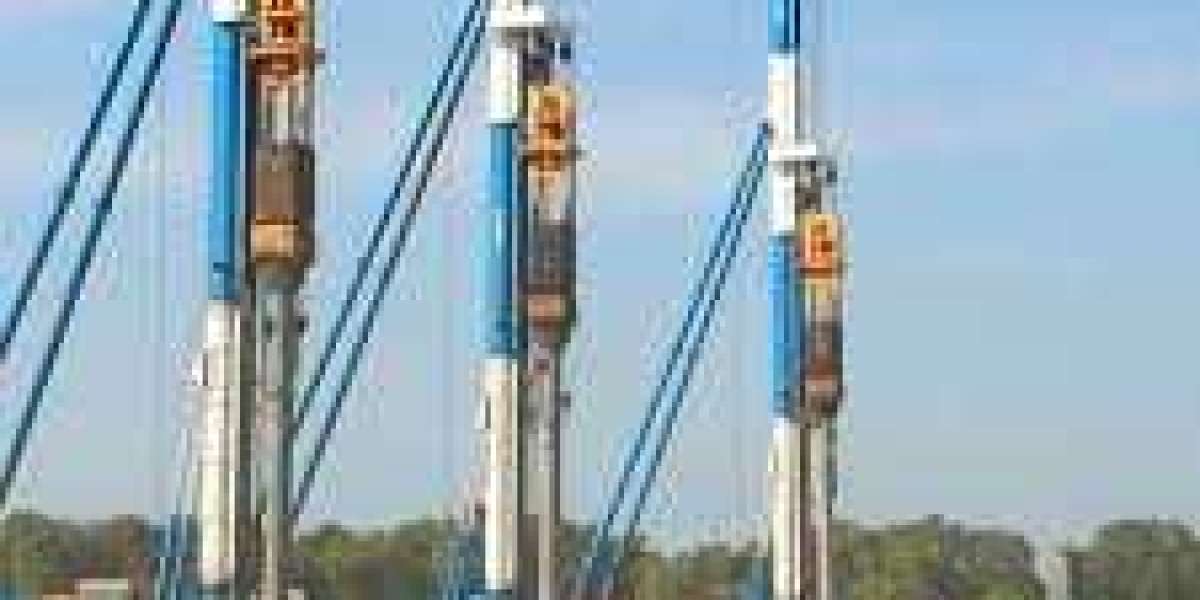A hydraulic pile driving hammer is an important machine used in construction to drive piles into the ground for strong foundations. It works using hydraulic pressure to lift and drop a heavy weight, delivering powerful force to push piles into soil. These hammers are reliable, but like all heavy equipment, they can face problems over time. Knowing the common problems and how to fix them can save time, reduce costs, and prevent bigger issues.
In this guide, we will look at the most common problems with a hydraulic pile driving hammer, why they happen, and simple ways to fix or prevent them.
1. Low Hydraulic Pressure
One of the most common issues with a hydraulic pile driving hammer is low hydraulic pressure. Without enough pressure, the hammer cannot deliver the force needed to drive piles effectively.
Possible causes:
Hydraulic fluid level is too low.
The hydraulic pump is worn out or damaged.
Leaks in hydraulic hoses or connections.
Clogged filters that restrict fluid flow.
How to fix it:
Check the hydraulic fluid level and top it up if needed.
Inspect hoses and connections for leaks, and replace damaged parts.
Clean or replace clogged hydraulic filters.
If the pump is worn, it may need repair or replacement.
Prevention tip:
Regularly check the hydraulic system and keep the fluid clean. Preventing leaks will help maintain strong pressure.
2. Overheating of Hydraulic Oil
Hydraulic oil overheating is another common problem. If the oil becomes too hot, it loses its ability to lubricate and protect the system.
Possible causes:
Continuous heavy use without breaks.
Dirty oil or clogged cooling system.
Low oil levels causing extra strain on the system.
Faulty cooling fans or heat exchangers.
How to fix it:
Let the hammer rest during long operations to cool down.
Clean or replace clogged oil coolers.
Keep oil at the correct level.
Replace damaged cooling parts immediately.
Prevention tip:
Monitor the oil temperature during work. If you notice it climbing too high, stop and investigate before damage occurs.
3. Weak Impact Power
Sometimes, the hydraulic pile driving hammer may run, but the impact force is too weak to drive piles efficiently.
Possible causes:
Incorrect operating pressure setting.
Worn-out hammer parts like the piston or ram.
Air bubbles in the hydraulic system.
Wrong type of hydraulic oil.
How to fix it:
Check and adjust operating pressure according to the manufacturer’s guide.
Replace worn hammer components.
Remove air from the hydraulic system by bleeding it properly.
Always use the recommended hydraulic oil.
Prevention tip:
Follow the correct operation procedure and use only suitable oil to avoid unnecessary wear.
4. Oil Leaks
Oil leaks are messy, waste hydraulic fluid, and can lead to bigger problems.
Possible causes:
Damaged seals and gaskets.
Cracks in hydraulic hoses.
Loose fittings or connections.
Excessive vibration causing parts to loosen.
How to fix it:
Replace worn seals and gaskets immediately.
Change cracked hoses before they burst.
Tighten loose fittings carefully without over-tightening.
Check vibration dampers and maintain them.
Prevention tip:
Inspect the hammer before and after each job to catch small leaks early.
5. Unusual Noises During Operation
If the hydraulic pile driving hammer starts making strange knocking, grinding, or hissing sounds, it could mean trouble.
Possible causes:
Air trapped in the hydraulic system.
Worn or loose mechanical parts.
Hydraulic pump problems.
Contaminated oil.
How to fix it:
Bleed the system to remove trapped air.
Tighten or replace worn mechanical parts.
Repair or replace a faulty pump.
Drain dirty oil and refill with fresh, clean oil.
Prevention tip:
Listen to the hammer during operation. Early detection of noise changes can prevent bigger breakdowns.
6. Slow Operation
If the hammer works but is slower than normal, it affects productivity and increases fuel costs.
Possible causes:
Low hydraulic pressure.
Blocked filters.
Excessive wear on moving parts.
Cold weather making oil too thick.
How to fix it:
Solve hydraulic pressure issues as mentioned earlier.
Clean or replace filters regularly.
Replace worn moving parts.
Use hydraulic oil designed for the operating temperature.
Prevention tip:
Warm up the machine before work in cold weather to keep oil flowing smoothly.
7. Piston Jamming
The piston inside the hydraulic pile driving hammer is vital for delivering impact. If it jams, the hammer stops working.
Possible causes:
Dirt or debris inside the hammer.
Lack of lubrication.
Bent or damaged piston.
How to fix it:
Clean the hammer thoroughly.
Keep lubrication at the right level.
Replace a bent or damaged piston.
Prevention tip:
Always keep the hammer clean and store it in a safe, dry place when not in use.
8. Excessive Vibration
While vibration is normal, too much can damage the hammer and operator comfort.
Possible causes:
Worn vibration dampers.
Loose mounting bolts.
Misalignment between the hammer and pile.
How to fix it:
Replace vibration dampers as needed.
Tighten mounting bolts.
Make sure the hammer is aligned correctly with the pile.
Prevention tip:
Check alignment before starting work and inspect vibration control parts regularly.
Final Tips for Long-Lasting Performance
A hydraulic pile driving hammer is a strong and valuable machine, but only if it is taken care of. Regular maintenance, timely repairs, and correct operation will keep it working for many years.


